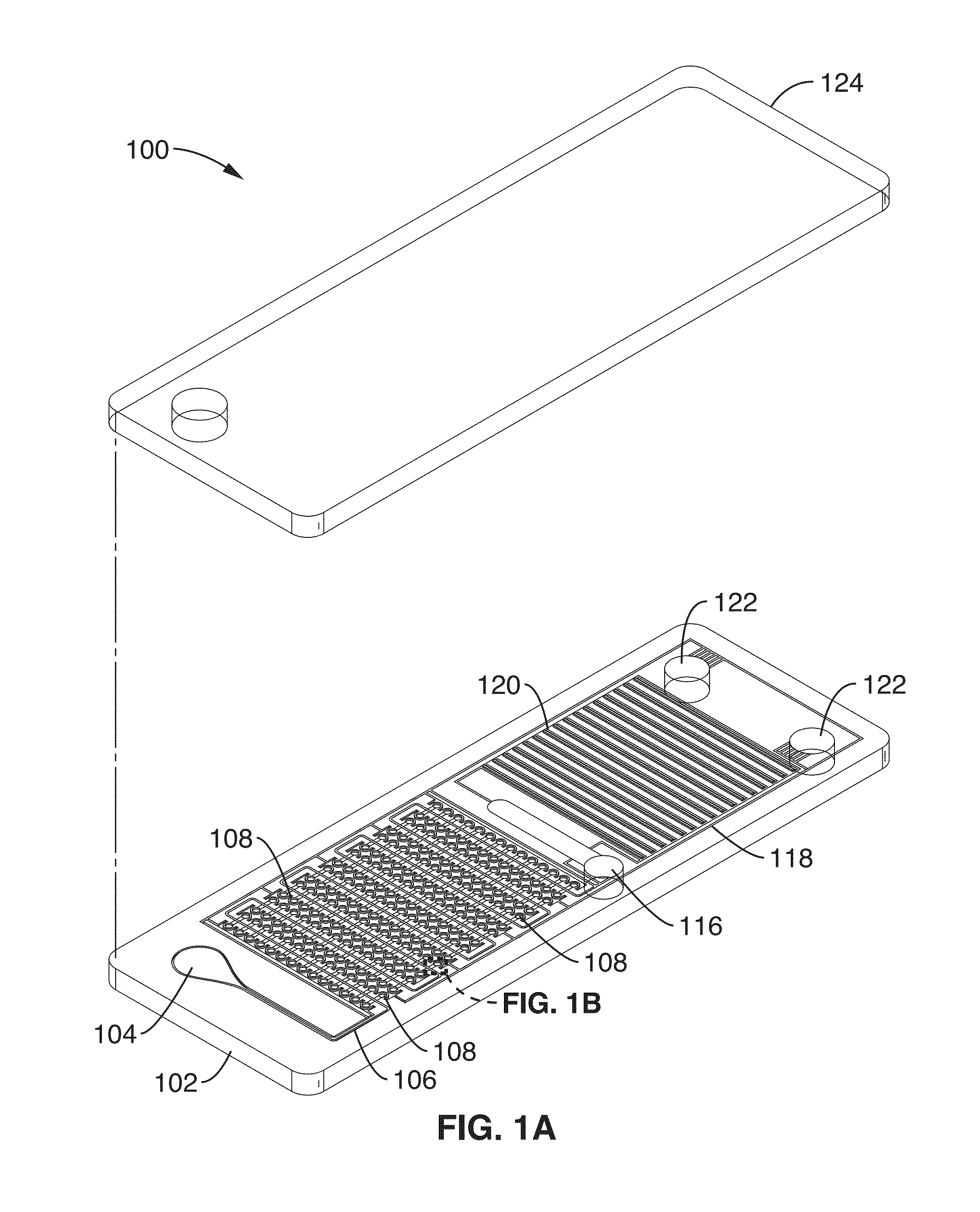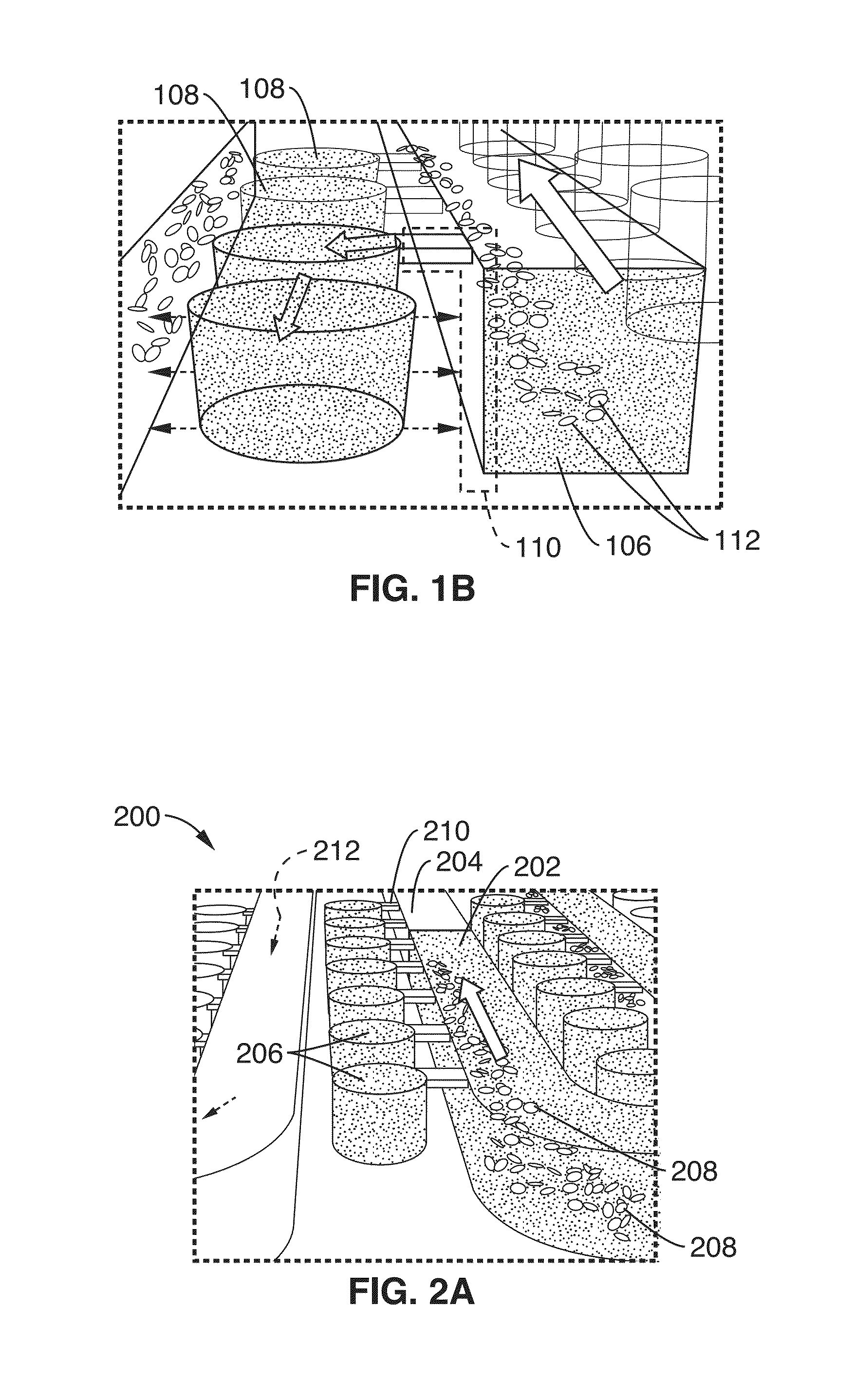Digital fluid sample separation apparatus and methods for one-step quantitative sample analysis
a fluid sample and digital technology, applied in biochemistry apparatus and processes, fluid controllers, laboratory glassware, etc., can solve the problems of high cost of testing, high cost of equipment, and high cost of electrical sources and bulky equipment, so as to reduce the cost of testing and simplify the assay
- Summary
- Abstract
- Description
- Claims
- Application Information
AI Technical Summary
Benefits of technology
Problems solved by technology
Method used
Image
Examples
example 1
[0068]As an example of blood based disease NA detection, HIV viral load quantification in blood was used as a demonstration. To demonstrate digital NA amplification, Recombinase Polymerase Amplification (RPA) was used, which is a ˜40° C. isothermal NA amplification technique. With 30 minutes of incubating at 40° C. using reusable instant heat packs, on-chip detection of HIV-1 RNA from spiked blood samples was achieved. The quantitative digital nucleic acid (NA) detection dynamic range was 103-106 copies / ml.
[0069]RPA was chosen because of the relatively low incubation temperature that is required. The lower incubation temperature greatly reduces the risk of generating air bubbles, in contrast to using PCR, which heats the samples up to 95° C. RPA is also the fastest isothermal amplification method commercially available to date. This, in combination with its robustness when used with plasma samples, made it an ideal NA amplification technique to integrate with the DS chip. It should ...
example 2
[0087]This assay was performed to demonstrate that digital separation can integrate sample preparation with digital isothermal amplification using RPA, to detect Methicillin-resistant Staphylococcus aureus (MRSA) DNA directly from human whole blood samples in 30 minutes.
[0088]Using the cliff structures described in FIG. 1B, blood cell sedimentation was also used in this example to skim plasma into the wells. By separating the red blood cells, there is less optical obstruction of the fluorescence signal and less enzymatic interference of the polymerase due to hemoglobin inhibition. Since there is very low shear stress created on the red blood cells, there is minimal hemolysis. The DS chip design also avoids blood cells clogging since there are no features that would cause blood cell stacking against the flow. DS enables digital NA amplification assays (e.g. RPA) to be performed directly from separated plasma or other sample. In this example, the cliff structures and wells were arrang...
PUM
| Property | Measurement | Unit |
|---|---|---|
| Length | aaaaa | aaaaa |
| Length | aaaaa | aaaaa |
| Time | aaaaa | aaaaa |
Abstract
Description
Claims
Application Information
 Login to View More
Login to View More - R&D
- Intellectual Property
- Life Sciences
- Materials
- Tech Scout
- Unparalleled Data Quality
- Higher Quality Content
- 60% Fewer Hallucinations
Browse by: Latest US Patents, China's latest patents, Technical Efficacy Thesaurus, Application Domain, Technology Topic, Popular Technical Reports.
© 2025 PatSnap. All rights reserved.Legal|Privacy policy|Modern Slavery Act Transparency Statement|Sitemap|About US| Contact US: help@patsnap.com



